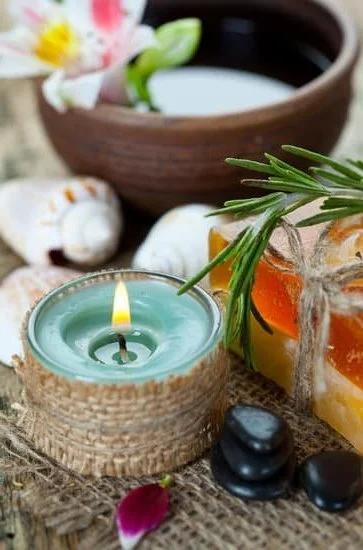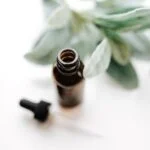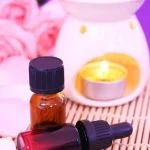Are you looking for a natural way to promote better sleep and relaxation? One effective method is by using an aromatherapy pillow spray. In this article, we will guide you on how to make an aromatherapy pillow spray from scratch, providing you with the knowledge to create a customized blend that suits your preferences and needs.
Aromatherapy pillow sprays are designed to enhance your sleep environment and promote relaxation through the use of essential oils. The benefits of using such a spray include improved sleep quality, reduced stress, and a calmer state of mind. By incorporating the right essential oils into your homemade pillow spray, you can create a soothing and personalized experience that helps you unwind at the end of each day.
Throughout this article, we will discuss the benefits and uses of aromatherapy pillow sprays, provide guidelines for choosing the right essential oils, list all necessary supplies needed for creating your own blend, offer a step-by-step recipe on making the pillow spray, as well as tips for packaging and storing it for optimal freshness.
Additionally, we’ll explore different techniques for using the pillow spray to enhance sleep and relaxation while also providing ideas for personalizing it to suit individual preferences.
So let’s get started on creating your very own aromatherapy pillow spray.
Choosing the Right Essential Oils
When it comes to making your own aromatherapy pillow spray, selecting the right essential oils is essential for creating a customized blend that suits your needs and preferences. With the wide variety of essential oils available, it can be overwhelming to choose the best ones for promoting relaxation and better sleep.
Start by considering your personal preferences and any specific benefits you are looking for in an aromatherapy pillow spray. For example, if you struggle with insomnia, you may want to choose calming essential oils such as lavender or chamomile. On the other hand, if stress relief is your goal, then soothing scents like bergamot or ylang ylang may be more suitable for your blend.
It’s also important to consider any potential sensitivities or allergies when choosing essential oils for your pillow spray. Some individuals may have reactions to certain scents, so it’s crucial to do a patch test before using the pillow spray regularly. Additionally, if you plan on using the pillow spray around children or pets, be sure to research which essential oils are safe for them.
| Choosing Essential Oils | Guide |
|---|---|
| Sensitivities and allergies | Patch test before regular use |
| Personal preferences | Consider specific benefits needed from aromatherapy |
| Safety precautions | Research safety of essential oils around children and pets |
Once you have considered these factors, it’s time to start experimenting with different combinations of essential oils to create your ideal pillow spray blend. Keep in mind that some essential oils complement each other well, while others may not mix harmoniously. You may want to start with small batches and make adjustments until you find the perfect combination that promotes relaxation and a restful night’s sleep.
Finally, don’t be afraid to get creative and think outside the box when selecting essential oils for your pillow spray. You can even combine different scents to create a unique and personalized blend that suits your individual needs and preferences. By carefully choosing the right essential oils for your aromatherapy pillow spray, you can enjoy its soothing benefits whenever needed.
Gathering the Necessary Supplies
List of Materials and Ingredients
To make your own aromatherapy pillow spray, you will need the following materials and ingredients:
- 4oz (120ml) glass spray bottle
- Distilled water
- Witch hazel or vodka
- Essential oils of your choice
- Funnel
- Measuring cup
- Mixing bowl
Choosing the Right Essential Oils
When selecting essential oils for your pillow spray, it is important to choose scents that are known for their calming and relaxing properties. Some popular options include lavender, chamomile, bergamot, cedarwood, and ylang ylang. These essential oils have been traditionally used for promoting better sleep and relaxation. You can also experiment with creating your own custom blend by mixing different essential oils to suit your personal preferences.
Where to Find Supplies
The materials and ingredients needed to make an aromatherapy pillow spray can be found at various stores or online retailers that specialize in essential oils and DIY aromatherapy products. The glass spray bottles can typically be found at health food stores, specialty craft shops, or online. When purchasing essential oils, it is important to choose high-quality, pure oils from reputable suppliers to ensure the effectiveness of the aromatherapy pillow spray.
By gathering all the necessary supplies and selecting the right essential oils, you are ready to begin creating your own personalized aromatherapy pillow spray. Following the recipe and instructions provided will allow you to experience the benefits of this soothing and relaxing product firsthand.
Recipe for Aromatherapy Pillow Spray
Making your own aromatherapy pillow spray is a simple and effective way to promote relaxation and better sleep. By using natural essential oils, you can create a personalized blend that suits your individual needs and preferences. Here is a step-by-step guide on how to make an aromatherapy pillow spray at home.
Ingredients
- 2 ounces of distilled water
- 1 tablespoon of witch hazel or vodka (to help disperse the essential oils)
- 20-30 drops of your chosen essential oils (such as lavender, chamomile, or eucalyptus)
Instructions
- In a small spray bottle, combine the distilled water and witch hazel or vodka.
- Add the desired number of drops of essential oils to the mixture. You can customize the blend based on your preferences for relaxation and sleep support.
- Close the bottle tightly and shake well to ensure all ingredients are thoroughly mixed.
- Your aromatherapy pillow spray is now ready to use.
Using this simple recipe, you can create a soothing pillow spray that will help calm your mind and promote restful sleep. Store the spray in a cool, dark place to maintain its potency and effectiveness.
By following these easy steps, you can make an aromatherapy pillow spray that is personalized to your liking and tailored for promoting tranquility and relaxation at bedtime. Enjoy the calming effects of this natural remedy as you prepare for a peaceful night’s sleep.
Packaging and Storing
Once you have successfully created your own aromatherapy pillow spray, it’s important to properly store and package it to maintain its effectiveness and freshness. When not stored correctly, essential oils can degrade and lose their potency over time. To ensure that your homemade pillow spray retains its benefits for as long as possible, here are some tips for proper storage and packaging.
First, it is crucial to use a dark glass bottle to store your aromatherapy pillow spray. Dark-colored bottles help protect the essential oils from light exposure, which can cause them to deteriorate. Amber or blue glass bottles are commonly used for this purpose. Additionally, make sure that the bottle has a tight-fitting cap or pump to prevent air from entering and oxidizing the essential oils.
Secondly, store your aromatherapy pillow spray in a cool, dark place away from direct sunlight and heat sources. Excessive heat can speed up the oxidation process of essential oils, leading to a decrease in their therapeutic properties. A linen closet or drawer in your bedroom can be an ideal storage location. Avoid storing the pillow spray in the bathroom, as the humidity and temperature fluctuations can also affect its quality.
Lastly, consider labeling your homemade pillow spray with the date of creation and the ingredients used. This will help you keep track of its shelf life and ensure that you are using it within a reasonable timeframe. Properly stored and labeled, an aromatherapy pillow spray can typically retain its potency for at least six months to one year.
| Storage Tip | Description |
|---|---|
| Use Dark Glass Bottle | Protects essential oils from light exposure |
| Store in a Cool Place | Away from direct sunlight and heat sources |
| Label Bottle with Date | Keep track of shelf life for optimal freshness |
How to Use Aromatherapy Pillow Spray
Using aromatherapy pillow spray is a simple yet effective way to enhance sleep and relaxation. The soothing scents of essential oils can help create a calming atmosphere, making it easier to unwind and prepare for a restful night’s sleep. There are different techniques for using pillow spray, and each method can contribute to a more peaceful and soothing bedtime routine.
Applying Directly to the Pillow
One common method for using aromatherapy pillow spray is to directly apply it to your pillow before bedtime. Simply shake the bottle well, then lightly mist the spray over your pillow from a distance. Allow it to air dry for a few minutes before laying down. This technique ensures that you will inhale the calming aroma throughout the night as you rest your head on the pillow.
Misting Over Bedding
For an overall relaxing effect, consider misting the aromatherapy pillow spray over your bedding or throughout your bedroom. This can create a tranquil environment that promotes relaxation and better sleep. Be mindful of any delicate fabrics or linens that may be sensitive to direct contact with essential oils, and always perform a patch test in an inconspicuous area before misting over larger areas.
Incorporating Into Relaxation Routines
In addition to using aromatherapy pillow spray at bedtime, consider incorporating it into other relaxation routines throughout the day. You can use the spray during meditation, yoga practice, or even when taking a relaxing bath. By associating the soothing scent with moments of tranquility, you can reinforce its calming effects and promote overall well-being.
By exploring different techniques for using aromatherapy pillow spray, individuals can tailor their experience to meet their unique relaxation needs and preferences, ultimately promoting better sleep and improved overall well-being. Whether applied directly to pillows, misted over bedding, or incorporated into various relaxation practices, this natural remedy offers an accessible way to incorporate wellness into daily life.
Customizing Your Pillow Spray
Creating a personalized aromatherapy pillow spray allows you to tailor the scent to your specific preferences and needs. The right combination of essential oils can not only promote relaxation and better sleep but also cater to individual preferences. Below are some ideas for customizing your pillow spray:
1. Selecting Essential Oils: Consider your favorite scents and their associated properties. For example, lavender is known for its calming effects, while peppermint can provide a refreshing and invigorating experience. Create a blend that resonates with you personally, whether it’s a calming floral combination or an energizing citrus mix.
2. Adjusting Concentrations: The strength of the pillow spray’s aroma can be adjusted based on personal preferences. If you prefer a subtle scent, use fewer drops of essential oils in the recipe. For a more potent fragrance, increase the amount of essential oils used.
3. Adding Personal Touches: Consider adding dried flowers or herbs to the pillow spray for visual appeal and added aromatherapeutic benefits. For example, dried chamomile flowers can enhance relaxation, while rose petals can add a touch of luxury to your pillow spray.
By customizing your aromatherapy pillow spray, you can create a unique blend that caters to your individual preferences and needs for relaxation and better sleep.
Other Aromatherapy Tips
In addition to creating a customized aromatherapy pillow spray, there are many other ways to incorporate aromatherapy into your daily routine for improved well-being and stress relief. One method is to use essential oils in a diffuser throughout the day, whether it’s in your home or office. The gentle scent of essential oils can help create a calming atmosphere and promote a sense of relaxation.
Another way to benefit from aromatherapy is through the use of scented candles or bath products infused with essential oils. These products can add a touch of luxury to your self-care routine and provide an additional opportunity for relaxation and stress relief. Additionally, incorporating massage oils or lotions with soothing essential oil blends into your skincare routine can provide an added layer of relaxation and rejuvenation.
It’s important to remember that everyone responds differently to aromatherapy, so it may take some experimentation to find the scents and methods that work best for you. Whether it’s through a pillow spray, diffuser, bath products, or massage oils, finding the right aromatherapy practice can contribute significantly to your overall well-being and quality of life. So why not start by learning how to make an aromatherapy pillow spray and then explore these other options?
Frequently Asked Questions
How Do You Make Essential Oil Spray for Pillows?
Making essential oil spray for pillows is a simple process. You can start by combining distilled water and a few drops of your preferred essential oil in a spray bottle. Shake well before using and lightly mist your pillow before bedtime.
What Is the Best Oil for Pillow Spray?
The best oil for pillow spray ultimately depends on personal preference, but lavender oil is a popular choice due to its calming properties and pleasant scent. Other options include chamomile, bergamot, or ylang-ylang, which also have soothing aromas.
How Long Does Homemade Pillow Spray Last?
The shelf life of homemade pillow spray can vary depending on the ingredients used. Typically, a mixture of distilled water and essential oils can last for several weeks if stored in a cool, dark place. Adding alcohol or witch hazel as a preservative can help extend the spray’s lifespan. Always check for any signs of spoilage before use.

Are you looking for a natural way to improve your health and wellbeing?
If so, aromatherapy may be the answer for you.





